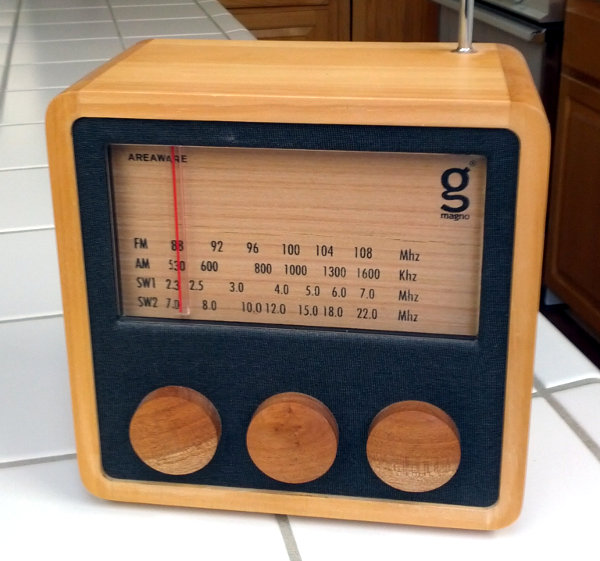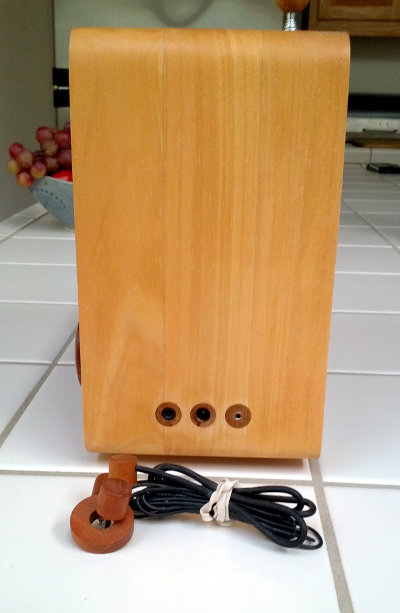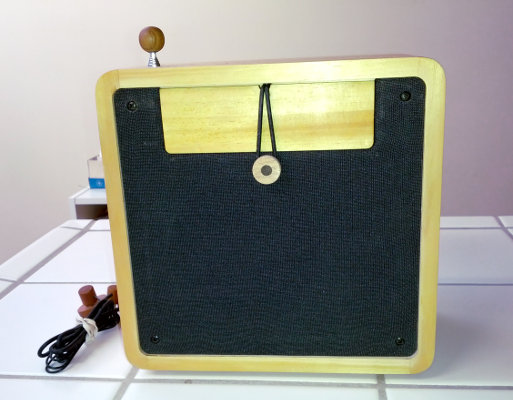
A radio made almost entirely of wood might be considered a novelty item, but this is a real, working radio. Obviously the electronic circuitry isn't made of wood but the case is pine, the knobs are mahogany, and other sustainable materials are used.
Indonesian designer Singgih Kartono came up with the idea for this radio, the KuBo, and three other models. Once he graduated from a technological institute in Indonesia in 1992, he went back to his village in central Java to see what he could do to improve its economy. He established a company, Piranti Works, taught villagers carprentry skills, established a tree nursery, and then designed and made various objects, such as compasses, tape rulers, desk accessories, and radios. The radio circuitry comes from an Indonesian electronics manufacturer, but the rest is assembled in the village.

I received this radio as a Christmas present a few years ago. At the time, it was distributed through Areaware, an American company. As of 2014, that no longer appears to be the case.
When I first saw this radio, my expectation was that this would be for display only. Still, I put in 4 AA batteries and turned it on. It performed better than expected. It's not my top performer, but AM reception is good, and FM reception is good as well. It has occasional problems with front-end overload, but that's not unusual for inexpensive FM radios. It's not nearly as prone to those problems, though, compared to some other analog radios that I have.
Shortwave coverage is included, too, because shortwave radio is still an important means of communication in Indonesia and some other tropical countries.
Aside from numbers on the dial, Kartono has not labeled the knobs on the radio. The leftmost knob is the on-off switch, plus volume. Band selection is done through the middle knob. The rightmost knob is for tuning.
There are three jacks on the side of the radio, also not labeled. One is to plug in an external audio source, such as a music player, so that it can play through the radio's speaker. Another is for a wire antenna, probably most useful for shortwave coverage. The remaining one is for an AC adapter, not included.

The battery compartment in the rear is unique. The wooden door is held shut by an elastic band looped around a little wooden post. The door is snug enough not to pop out when the band is taken off the post.
Also in the rear is the radio's speaker. This does give the radio a slightly muffled sound. A similar version, the ReKTO, has a front-facing speaker. It's likely that it would sound a little better.
Even so, this is not just a very attractive object, it's a real, working, credible radio, designed and built with larger social goals in mind. You can learn more about the radio and the designer, Singgih Kartono, at www.magno-design.com.